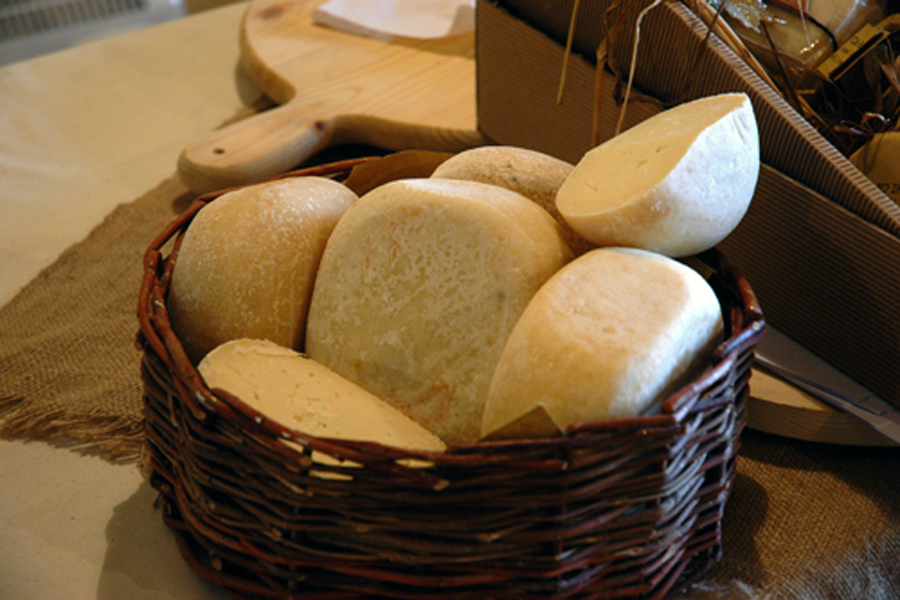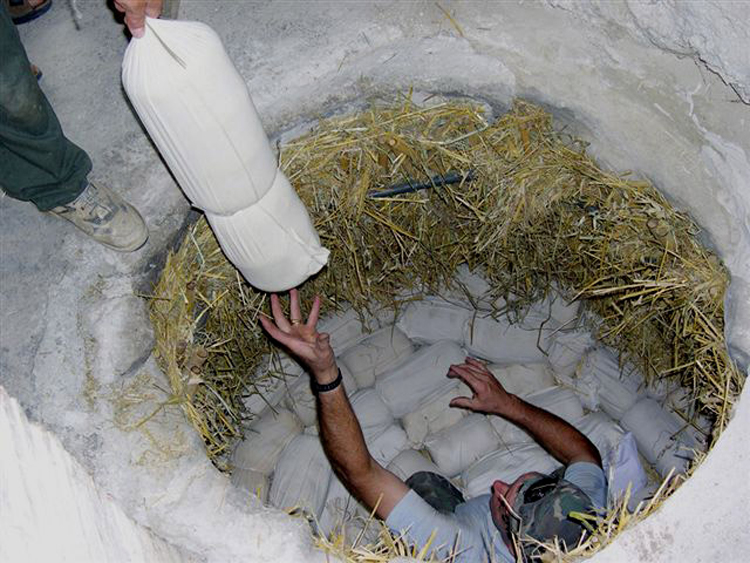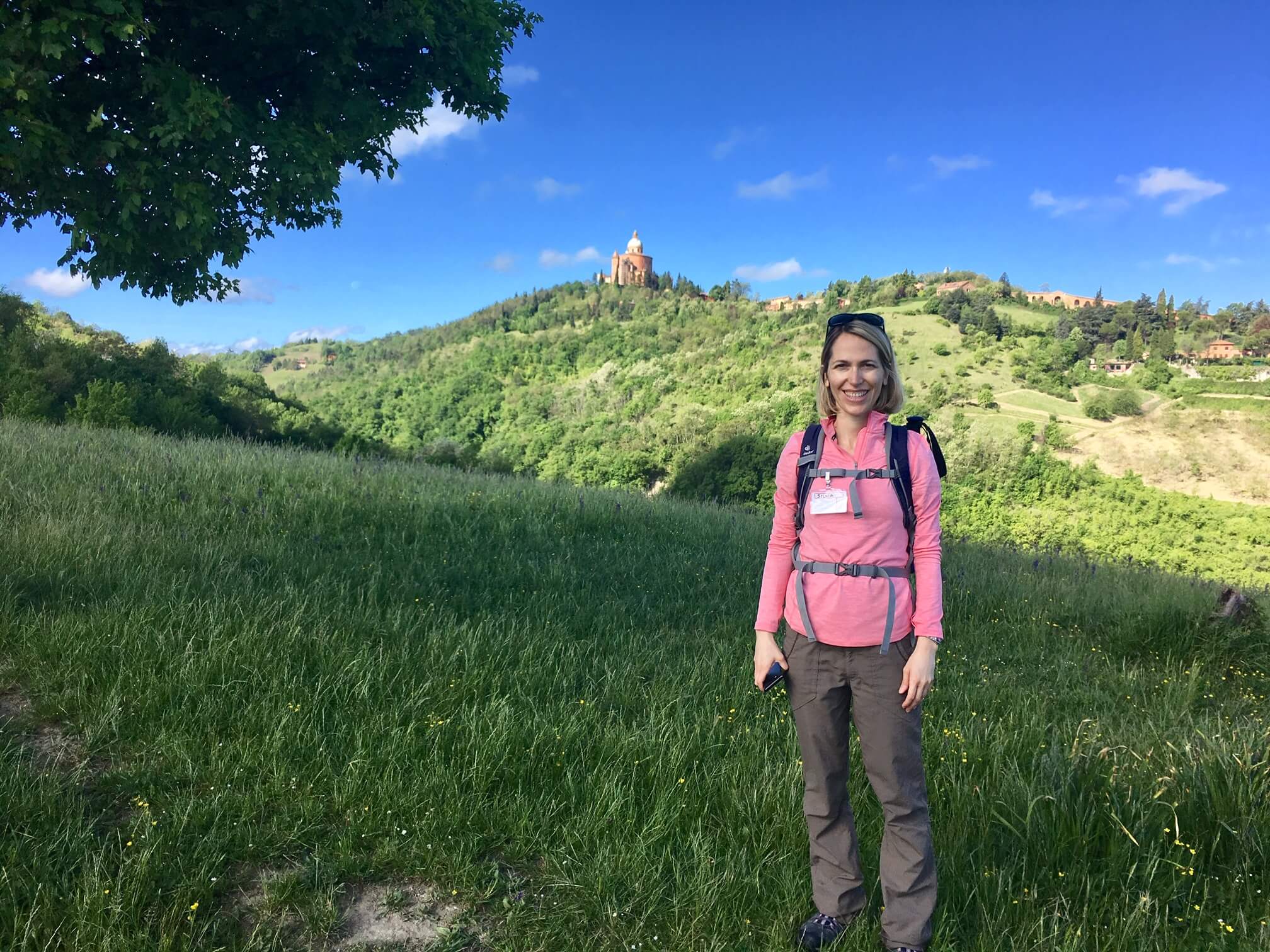
Everybody knows about Parmigiano-Reggiano of course, but that’s not the only cheese you’ll find in Emilia-Romagna.
Formaggio di Fossa, which we could translate as “cheese of the pit” (odd, right?!), is quite unique because inextricably linked to the geological and climatic environment where it’s made and to the local tradition.
Formaggio di Fossa is mainly produced in the town of Sogliano, located about 90 kilometers southeast of Bologna and about 35 kilometers southeast of Forlì, in Romagna, the beautiful south-eastern portion of the region.
In Sogliano and a nearby area that comprises the valley between the Rubicone river (the one of Julius Caesar’s fame) and the Marecchia, you’ll find a number of “fosse”, underground caves, where the cheese is left to ripen. These caves date back hundreds of years, to the tumultuous times when the Malatesta dynasty ruled Romagna (roughly from the end of the 13th century to the 17th century).

Originally, the caves were used as granaries. It is thought that, at some point during the 15th century, farmers, tired of raids, began hiding their food supplies below ground. When they took the cheese out, they discovered that it had acquired a whole new range of flavors and aromas – and that it was very good. And so the practice was passed down from one generation to the next. Today, Formaggio di Fossa is a highly coveted ingredient by professional chefs all over Italy.
I learned about the history of Formaggio di Fossa from a Sogliano-based producer, the family-run Fossa Pellegrini, which organizes guided tastings preceded by a visit to a small museum that illustrates the history and practices of Fossa cheese-making.
The key element, I learned, is the sandstone terrain where the pits were excavated, which creates the right temperature and humidity. Approximately six meters deep, the pits are carved out of tuff rock. Every year, at the beginning of August, the pits are opened and local producers (and even just private citizens) bring their cheese to be buried inside. The pits have been prepared in advance, by burning straw inside to eliminate excess humidity and also to sterilize the environment from germs that could harm the fermentation of the cheese. The walls are covered with a 15-centimeter layer of straw to isolate the tuff rock, while wood planks are arranged on the bottom of the pit.

The cheese typically ages for 30 days before being placed in the “fossa”, wrapped in cloth bags. The pit is closed off entirely to limit the oxygen, while the cheese ages for an additional three months. During this time, it re-ferments, acquiring a uniquely pungent, slightly bitter taste.
When it’s taken out around the beginning of November, it’s no longer the same cheese that was originally deposited into the pit. It has transformed into “formaggio di fossa”.
Fossa cheese can be made with cow’s milk (my preference), sheep’s milk or a combination of the two. It can be eaten by itself, used in quiches, or grated on pasta (for example tagliatelle al formaggio di fossa, yum) – but the unsurpassed combination, I was told, is with honey. Try it!
Every year, on the last two Sundays in November and the first in December, Sogliano hosts the Sagra del Formaggio di Fossa. You can not only buy the cheese directly from the producers, but you can also see the ‘fosse’, as they’re kept open.

